
Photo Tour: Ollantaytambo
Farther up the Sacred Valley from Cuzco and Urubamba is the dramatic village of Ollantaytambo (pronounced oh-yawn-tie-TOM-bow). It was built as an Inca administrative center (though the area was populated for a thousand years or so before that time). A lot of the original structures -- including the narrow streets lined by high stone walls, and the channels that carry fresh running water along the streets -- are still there, still part of everyday life.
Some of the most dramatic structures are the ruins on hillsides around the town. Because this was an administrative center, the Inca needed ways to tell time. They set up an ingenious and incredible system using sunlight and stars. For instance, rays projecting from a mountain top lit an area carefully chosen on a sheer cliff face where a temple was built to receive the light on a designated day of the year.
It's a bit overwhelming to look at all of this, to imagine the patience and skill these ancient people had to build a place this amazing -- and build it well enough to stand over the centuries through terrible earthquakes. Walking through the streets, seeing local people going about their lives, is (yes, really) like going back in time.
Ollantaytambo is near the floor of the Sacred Valley, at 2800 meters or so. The mountains around it and nearby are twice that height. This time of the year (December) is the start of the rainy season, when clear blue skies are sometimes replaced by mist and rain. The setting is fantastic:
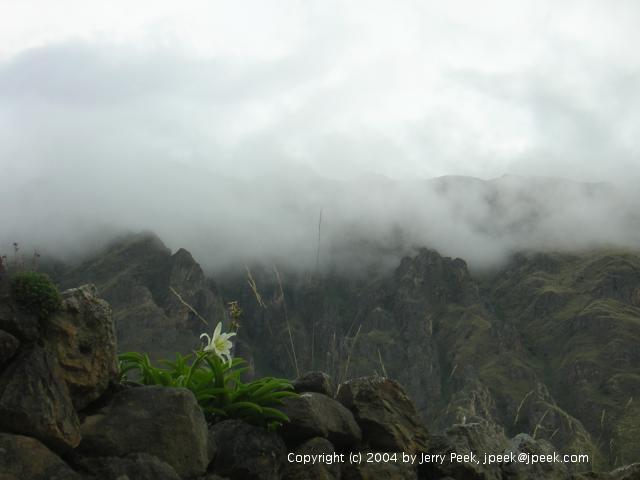

Almost wherever you are in town, you can see the temple and other ruins (which mostly aren't that ruined!) all around you:

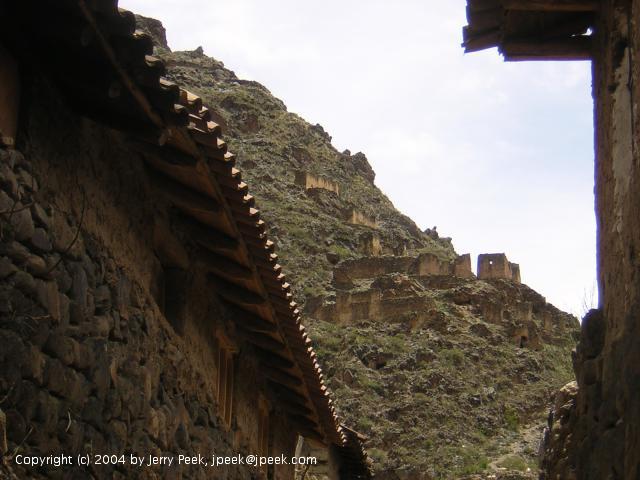
With all of this grandeur around, though, Ollantaytambo is still a rural town:
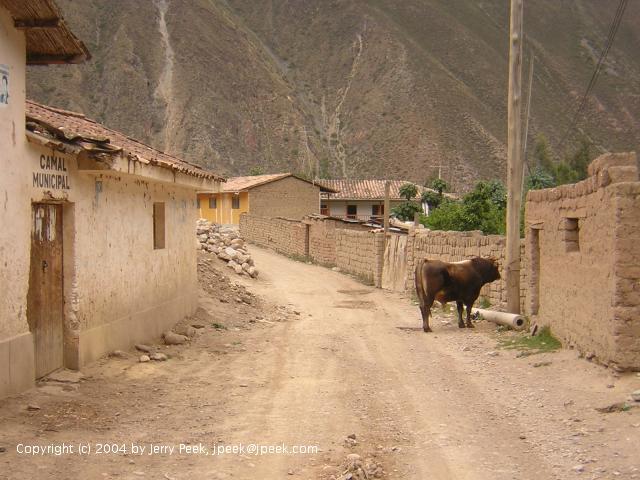
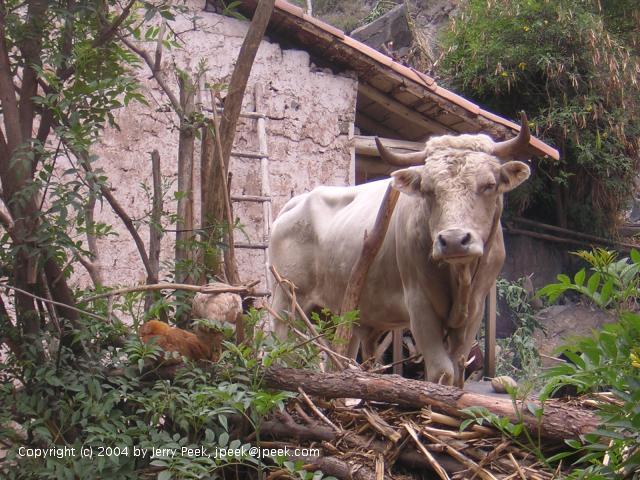
The streets are narrow, and most people aren't that well-to-do. So most people get around with foot power, carts, and motor jitneys:

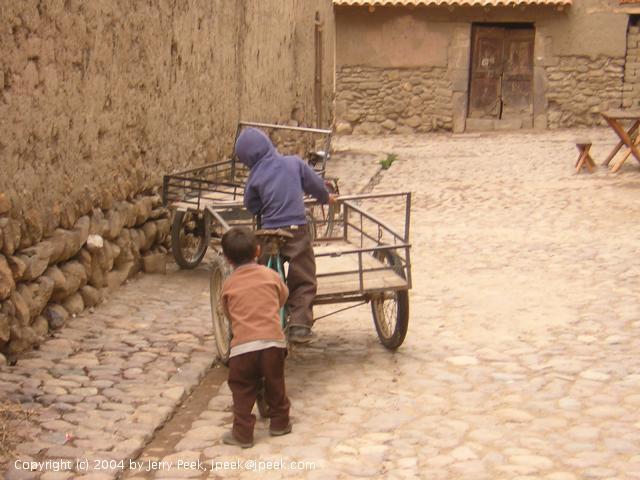
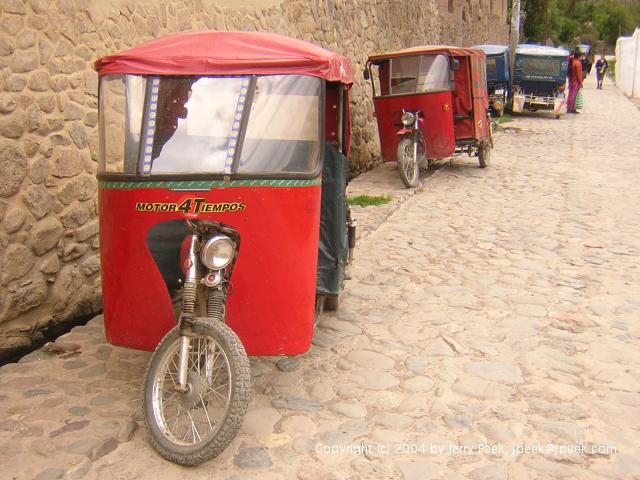
Two more scenes around town:
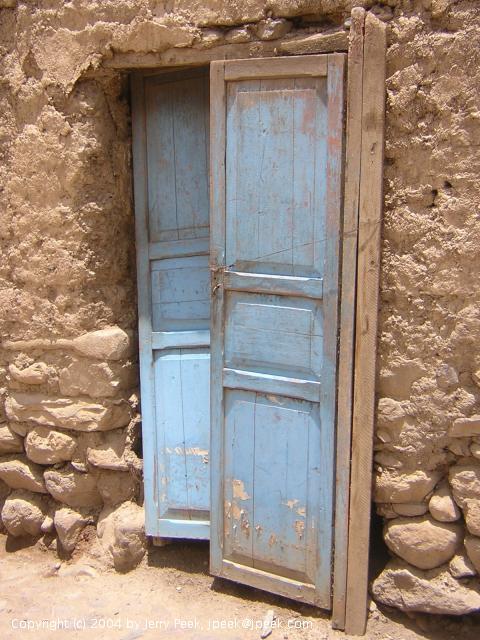
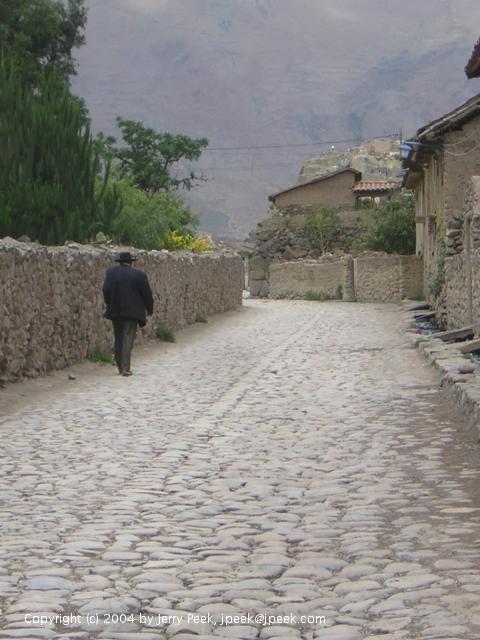
You can hear the sound of running water in a lot of places. The original channels are still in use -- for drinking, washing, and also to guide rainwater safely down to the Urubamba River. Until you get used to this, you have to pay attention to where you're walking!
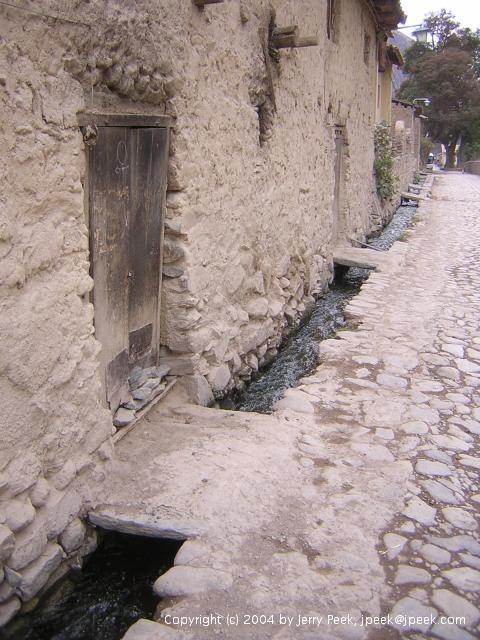
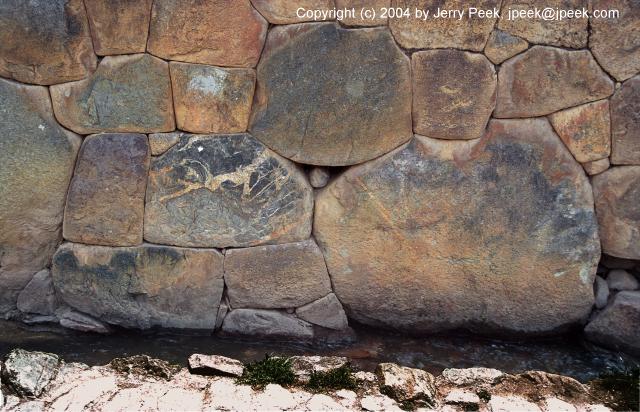
You'll still see a lot of native (and sort-of-native) dress:
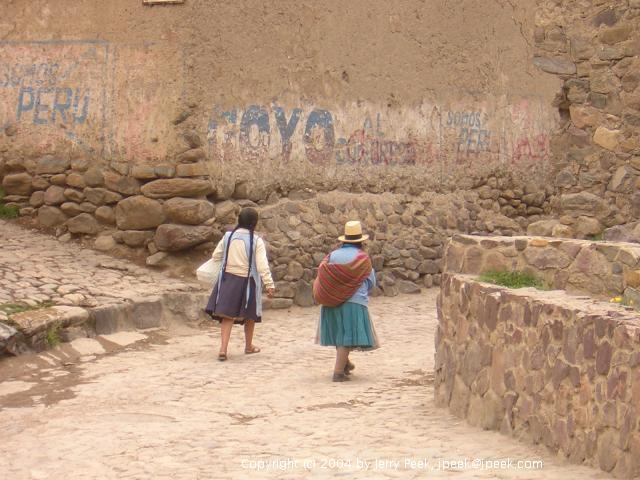
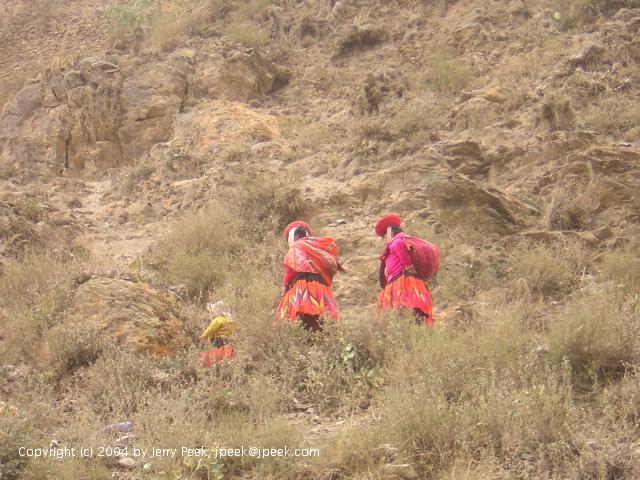
Like I said, the setting is fantastic. Getting here isn't too easy, but it's worth the effort:
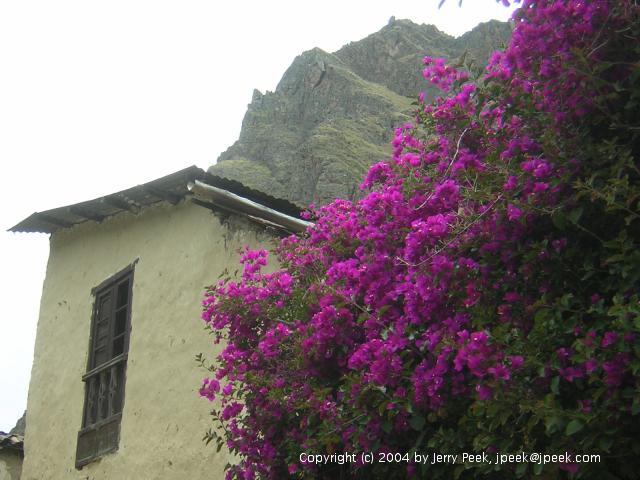
[Previous page:
The Sacred Valley: Around Urubamba]
[Next page:
Pisac]
[Tour start: Panama, Peru and Bolivia]
[Tours]
(These photographs are Copyright © 2004 by Jerry Peek. Much higher-resolution versions of most images, and many other images too, are available at Jerry Peek Photography. Photos are available at reduced prices, or free, for non-commercial use.)